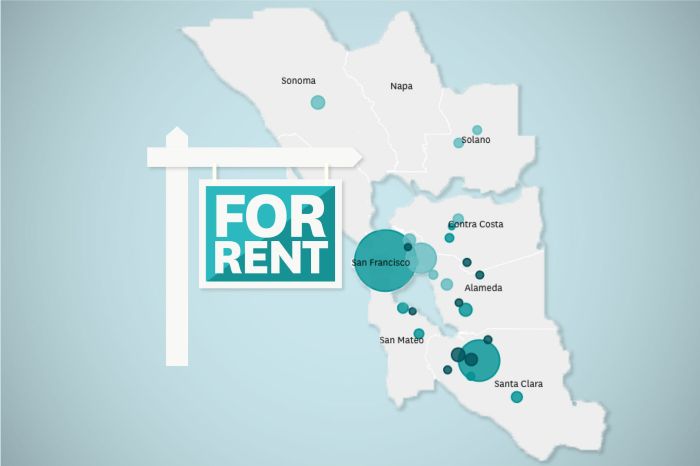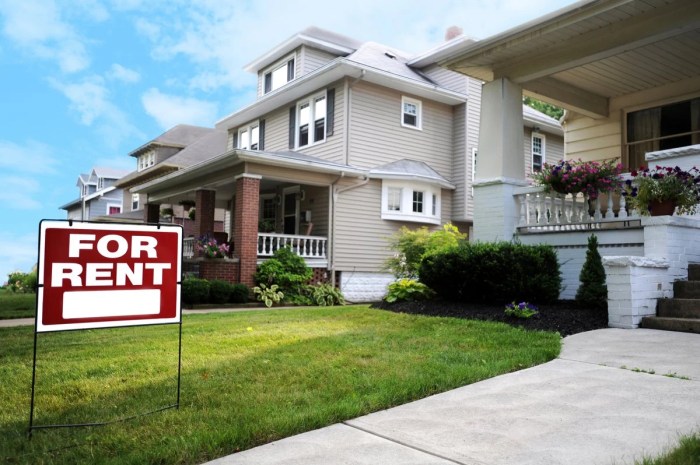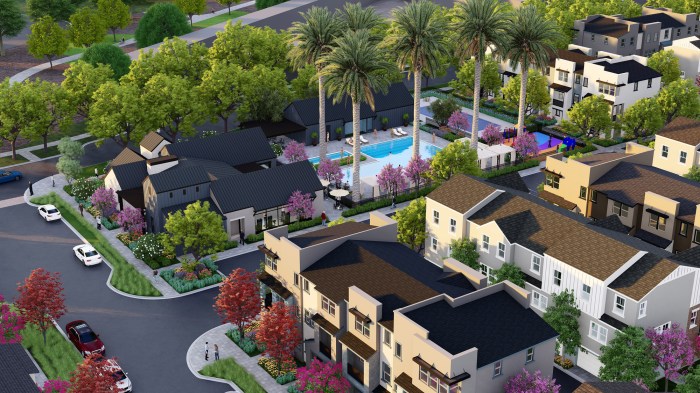Bay Area Rental Housing Market Overview
The Bay Area rental market is notoriously competitive, characterized by high demand and consequently, high rental prices. This overview examines current trends, price comparisons across various cities and neighborhoods, and the types of properties most sought after by renters.
Current Bay Area Rental Market Trends
Rental prices in the Bay Area have consistently risen over the past decade, exceeding inflation rates. Vacancy rates remain low, typically below 5%, indicating a strong renter demand. This competitive market favors landlords, leading to higher rents and shorter lease terms. Specific trends vary by location, with some areas experiencing more significant price increases than others.
Rental Cost Comparisons Across Bay Area Cities and Neighborhoods
Rental costs vary significantly depending on location. San Francisco generally commands the highest rents, followed by areas like Palo Alto, Mountain View, and Cupertino in Silicon Valley. More affordable options can be found in cities further from major employment centers, such as Oakland, San Jose (certain neighborhoods), and Richmond. However, even these areas have experienced substantial rent increases recently.
Most In-Demand Property Types
Apartments, particularly those in newer buildings with modern amenities, are highly sought after. Houses and townhouses are also in demand, especially among families and those seeking more space. Studios and smaller apartments are generally more affordable but also more competitive.
Average Rental Prices by Property Type and Location
| Property Type | San Francisco | Silicon Valley (Avg) | Oakland |
|---|---|---|---|
| Studio Apartment | $2500 | $2200 | $1800 |
| 1-Bedroom Apartment | $3500 | $3000 | $2400 |
| 2-Bedroom Apartment | $4500 | $3800 | $3000 |
| House | $6000+ | $5000+ | $4000+ |
Note: These are average estimates and actual prices can vary widely based on specific location, amenities, and property condition.
Factors Influencing Bay Area Rental Prices
Several factors contribute to the high rental costs in the Bay Area. Understanding these factors is crucial for prospective renters.
Key Factors Impacting Rental Costs
Location is the most significant factor, with proximity to employment centers, desirable schools, and amenities driving up prices. Property size and amenities (e.g., in-unit laundry, parking, updated appliances) also significantly influence rental costs. Economic conditions and interest rates play a secondary role, affecting both supply and demand.
Finding houses for rent in the Bay Area can be competitive, with a wide variety of options to consider. If you’re looking for something a bit different, you might explore more rural options; for example, check out this website for unique farm house for rent possibilities. Ultimately, the best choice depends on your specific needs and preferences when searching for houses for rent in the Bay Area.
Role of Economic Conditions and Interest Rates
Strong economic growth and low interest rates historically fuel demand, increasing rental prices. Conversely, economic downturns or rising interest rates can moderate price increases or even lead to slight decreases in some areas. However, the Bay Area’s robust tech industry tends to buffer it from significant economic downturns.
Influence of Transportation Access and Proximity to Employment Centers
Easy access to public transportation and proximity to major employment hubs (like Silicon Valley) significantly impact rental demand. Properties conveniently located near tech companies or public transit tend to command higher rents due to the increased convenience and desirability.
Advantages and Disadvantages of Renting in Different Bay Area Locations
- San Francisco: High rents, excellent public transportation, vibrant culture, but potentially long commutes depending on location.
- Silicon Valley: Extremely high rents, close proximity to tech jobs, but often congested traffic and limited public transit in some areas.
- Oakland: More affordable than San Francisco or Silicon Valley, improving public transit, but may require longer commutes to some employment centers.
- Marin County: Stunning scenery, high quality of life, but significantly higher rents and potentially long commutes to San Francisco.
Types of Rental Properties Available in the Bay Area
The Bay Area offers a diverse range of rental properties to suit various needs and budgets. This section provides a detailed overview of the available options.
Variety of Rental Property Types

Source: hdnux.com
The Bay Area rental market encompasses single-family homes, condominiums, apartments (ranging from studios to multi-bedroom units), and townhouses. Each type offers unique features and benefits.
Comparison of Property Types

Source: foolcdn.com
Single-family homes provide the most space and privacy, but often come with higher rents and maintenance responsibilities. Condos offer a balance between apartment-style living and homeownership-like amenities. Apartments range in size and amenities, offering varying degrees of convenience and affordability. Studios are the smallest and most affordable option, suitable for single occupants.
Typical Floor Plans and Layouts
Single-family homes vary widely in size and layout, often featuring multiple bedrooms and bathrooms, a kitchen, living room, and sometimes a backyard or garden. Condos typically have open floor plans, combining living and dining areas, and one or two bedrooms. Apartments range from studio apartments to larger units with multiple bedrooms and bathrooms. Layouts are often more standardized than in single-family homes.
Key Features, Average Rental Costs, and Target Renter Demographics
| Property Type | Key Features | Average Rent | Target Demographics |
|---|---|---|---|
| Studio Apartment | Compact living space, efficient layout | $2000 – $3000 | Single individuals, students |
| 1-Bedroom Apartment | Separate bedroom, living area, kitchen | $2500 – $4000 | Single individuals, couples |
| 2-Bedroom Apartment | Two bedrooms, living area, kitchen | $3500 – $5500 | Couples, small families |
| Single-Family Home | Multiple bedrooms, bathrooms, often a yard | $5000+ | Families, individuals seeking more space |
Finding and Securing a Rental Property in the Bay Area
Securing a rental property in the Bay Area requires a strategic approach and a thorough understanding of the process.
Effective Strategies for Searching for Rental Properties
Utilize online resources like Craigslist, Zillow, Apartments.com, and local real estate websites. Network with friends, family, and colleagues. Consider working with a real estate agent, although this usually involves fees. Attend open houses to get a feel for available properties.
Application Process and Required Documentation
The application process typically involves completing a rental application, providing proof of income, references, and undergoing a credit and background check. Landlords may also require a security deposit and first month’s rent upfront.
Typical Terms and Conditions of a Lease Agreement
Lease agreements typically Artikel the rental amount, lease term, responsibilities of both landlord and tenant, rules regarding pets, and procedures for addressing maintenance issues. Carefully review the lease before signing.
Step-by-Step Guide to Finding and Securing a Rental Property
- Define your needs and budget.
- Search for properties online and through other channels.
- Schedule viewings and tours.
- Submit a rental application and provide necessary documentation.
- Negotiate rent and lease terms (if applicable).
- Sign the lease agreement.
- Pay security deposit and first month’s rent.
Bay Area Rental Market Trends and Predictions
Analyzing current and projected trends helps prospective renters understand the market’s direction.
Current and Projected Trends
The Bay Area rental market is expected to remain competitive in the near future. While the pace of price increases might slow slightly due to potential economic factors, significant rent decreases are unlikely. Increased construction of new rental units could help ease the pressure, but demand remains high.
Factors Influencing Future Rental Prices and Availability
Economic fluctuations, interest rate changes, and the overall health of the tech industry will significantly impact rental prices and availability. Government regulations and policies related to housing could also play a role. Immigration patterns and population growth will continue to affect demand.
Long-Term Outlook for the Bay Area Rental Market
The long-term outlook suggests continued high demand for rental properties in the Bay Area, particularly in desirable locations. While new construction may alleviate some pressure, affordability will remain a major challenge for many renters. We can expect moderate rent increases in the long term, possibly outpacing inflation.
Projected Rental Price Changes Over the Next Five Years
A hypothetical projection could show a 3-5% annual increase in average rental prices for apartments in San Francisco and Silicon Valley, with slightly lower increases in Oakland and other surrounding areas. House rentals may see similar, or slightly higher, increases due to limited supply.
Tenant Rights and Responsibilities in the Bay Area
Understanding tenant rights and responsibilities is crucial for a positive rental experience.
Tenant Rights
Tenants have rights concerning privacy, habitability (landlord’s responsibility to maintain a safe and livable unit), and proper notice before eviction. California has specific laws protecting tenants from unfair practices.
Addressing Maintenance Issues and Resolving Disputes
Tenants should report maintenance issues promptly to their landlords. If the landlord fails to address the issue, tenants may have legal recourse. Mediation or arbitration services can help resolve disputes between landlords and tenants.
Importance of Renter’s Insurance

Source: hdnux.com
Renter’s insurance protects tenants’ belongings from damage or theft. It also provides liability coverage in case someone is injured on the property. It’s a relatively inexpensive but essential protection.
Resources for Tenants Seeking Legal Assistance or Information
- Tenant’s rights organizations
- Legal aid societies
- California Department of Consumer Affairs
- Local housing authorities
Clarifying Questions
What is the average security deposit in the Bay Area?
Security deposits typically range from one to two months’ rent, depending on the landlord and property.
How long does the rental application process usually take?
The application process can vary, but typically takes one to two weeks, sometimes longer depending on background checks and landlord availability.
What are common lease terms in the Bay Area?
Lease terms commonly range from six months to one year, with longer-term leases sometimes offering lower monthly rent.
What are my rights as a tenant in California?
California has strong tenant protections. You have the right to a habitable dwelling, reasonable notice before eviction, and protection against unlawful rent increases. Consult California’s tenant rights website for detailed information.
